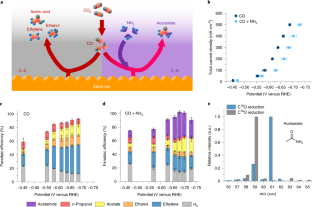(Technique could make better membranes for next-generation filtration)
2019/8/20 アメリカ合衆国カリフォルニア大学ロサンゼルス校 (UCLA)

・ UCLA は、薄膜フィルターを作製するための新しい、薄膜リフトオフ(T-FLO)手法を開発。新技術は、高機能性ポリマー、有機金属フレームワークや炭素材料を使い、さらに効果的でエネルギー効率の良いメンブレンを作製する道筋を示す。
・ 膜分離の技術は、薄い半多孔質膜である薄膜フィルターが、水などを通すことによって不要物を濾しわけることだが、商業用の薄膜フィルターの材料技術は過去 30 年間、特に進展がない。
・ 実験室レベルでは優れた分離能力を発揮するフィルター材料は多数あるものの、フィルターの製造方法に制限があるため、量産化には至っていない。新技術では、それらの材料を用いてスケーラブルで薄いフィルムの作製が可能。
・ 従来技術を用いた分離機能に加え、T-FLO 技術で作製したメンブレンは、膜分離に様々な新しい形状をもたらす。例えば、本技術により、産業廃棄物から二酸化炭素を除去できるようになれば、炭素を燃料や他のアプリケーションに転換でき、汚染を低減できる。
・ 脱塩に使用するタイプの薄膜フィルターは、非対称メンブレンとよばれており、2 層のうちの 1 層が薄く高密度でアクティブであり、特定のサイズより大きい粒子を排除し、もう片方の多孔質「サポート」層がメンブレンを構成し、逆浸透やその他のフィルタリング過程で使用された高圧を排除する。脱塩用の最初の非対称メンブレンは、1960 年代に UCLA のエンジニアたちにより考案された。
・ 現在は、非対称メンブレンはアクティブ層をサポート層の上に、または、両方を同時に鋳造する方法で作製。しかし、アクティブ層をより高度な材料で作製するためには、溶液や高熱を使用しなければならず、両方ともサポート層にダメージを与え、アクティブ層の粘着を妨げる。
・ T-FLO 手法では、アクティブ層を液体としてガラスや金属のシート上に鋳造し、その後硬化して、固形化する。次に、ファブリックで強化されたエキポシのサポート層を添加して、メンブレンを熱し、エポキシを凝固する。
・ サポート層にエキポシを使用するのは、T-FLO 手法を際立たせるイノベーションであり、最初にアクティブ層を作製してから、サポート層にダメージを与えることなく、化学物質や高熱で処理できるようになった。
・ その後、メンブレンを水に沈めて、エキポシの孔を形成する化学物質を洗い落とし、ガラスや金属のシート上からメンブレンを緩める。
・ 最後に、ブレードでメンブレンをプレートから剥離する、リフトオフ処理を施す。
・ 研究チームでは、T-FLO手法で作製したメンブレンを使って、水から塩を除去する試験をし、微生物などの有機物質によるメンブレンの目詰まりといった脱塩処理の共通課題を解消した。水に塩素を加えると、微生物は殺せるが、今まではほとんどのメンブレンも同時に壊れてしまっていた。本技術の TFLO メンブレンは、塩と塩素の両方の除去を成功させたことになる。
・ 他の試験では、同メンブレンで有機物質を廃棄用水から除去し、温室効果ガスを分離することができた。
・ 本研究は、U.S./China Clean Energy Research Center for Water-Energy Technologies 及び、米国立科学財団(NSF)の支援を受けた。本事業は、UCLA’s Sustainable LA Grand Challenges に準じている。
URL: http://newsroom.ucla.edu/releases/t-flo-technique-better-membranesfiltration?_ga=2.260759693.1467434340.1566546900-1412443386.1566546900
(関連情報)
Nano Letters 掲載論文(アブストラクトのみ:全文は有料)
Next-Generation Asymmetric Membranes Using Thin-Film Liftoff URL: https://pubs.acs.org/doi/10.1021/acs.nanolett.9b01289
Abstract
For the past 30 years, thin-film membrane composites have been the state-of-the-art technology for reverse osmosis, nanofiltration, ultrafiltration, and gas separation. However, traditional membrane casting techniques, such as phase inversion and interfacial polymerization, limit the types of material that are used for the membrane separation layer. Here, we describe a novel thin-film liftoff (T-FLO) technique that enables the fabrication of thin-film composite membranes with new materials for desalination, organic solvent nanofiltration, and gas separation. The active layer is cast separately from the porous support layer, allowing for the tuning of the thickness and chemistry of the active layer. A fiber-reinforced, epoxy-based resin is then cured on top of the active layer to form a covalently bound support layer. Upon submersion in water, the cured membrane lifts off from the substrate to produce a robust, freestanding, asymmetric membrane composite. We demonstrate the fabrication of three novel T-FLO membranes for chlorine-tolerant reverse osmosis, organic solvent nanofiltration, and gas separation. The isolable nature of support and active-layer formation paves the way for the discovery of the transport and selectivity properties of new polymeric materials. This work introduces the foundation for T-FLO membranes and enables exciting new materials to be implemented as the active layers of thin-film membranes, including high-performance polymers, two-dimensional materials, and metal–organic frameworks.


